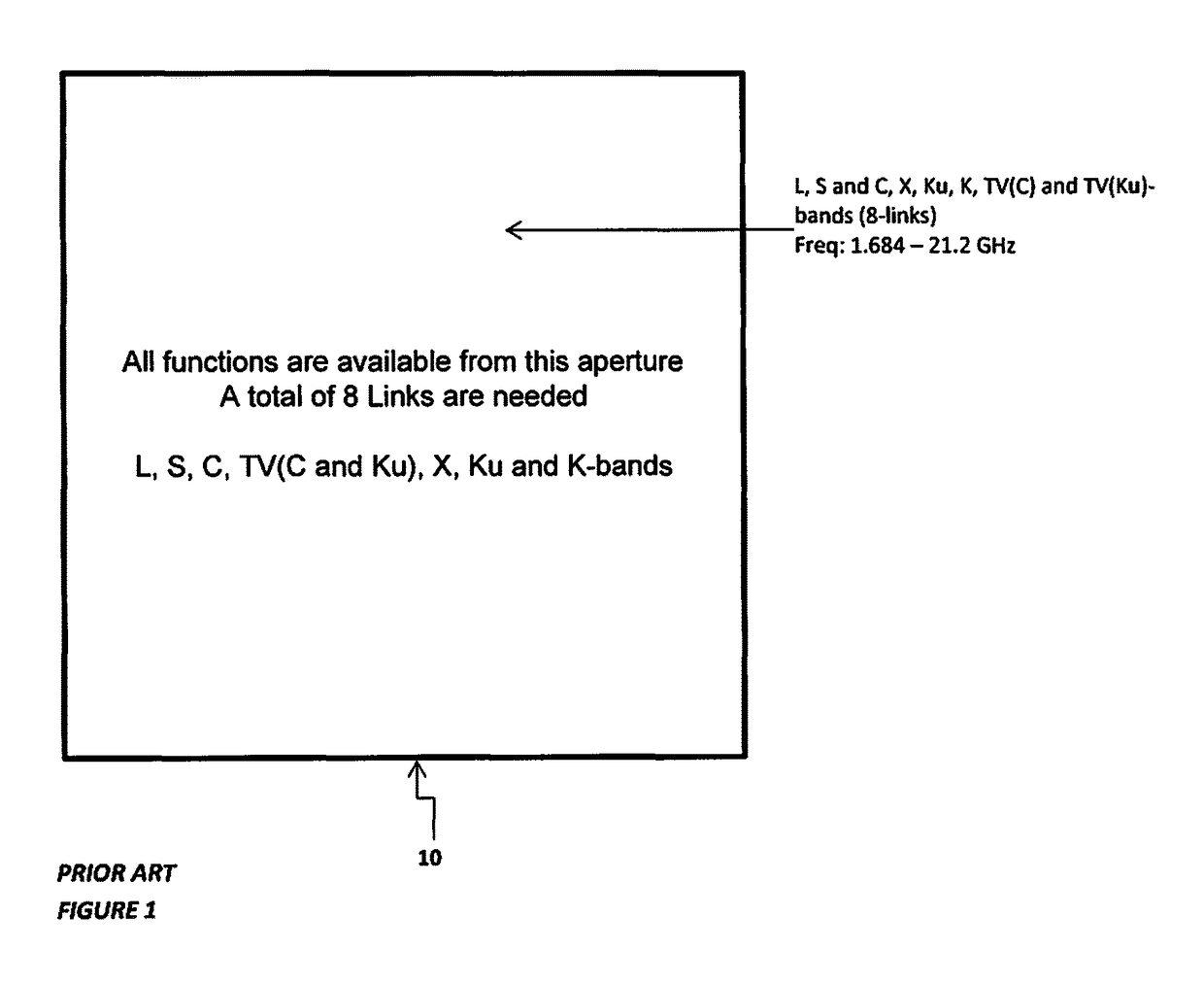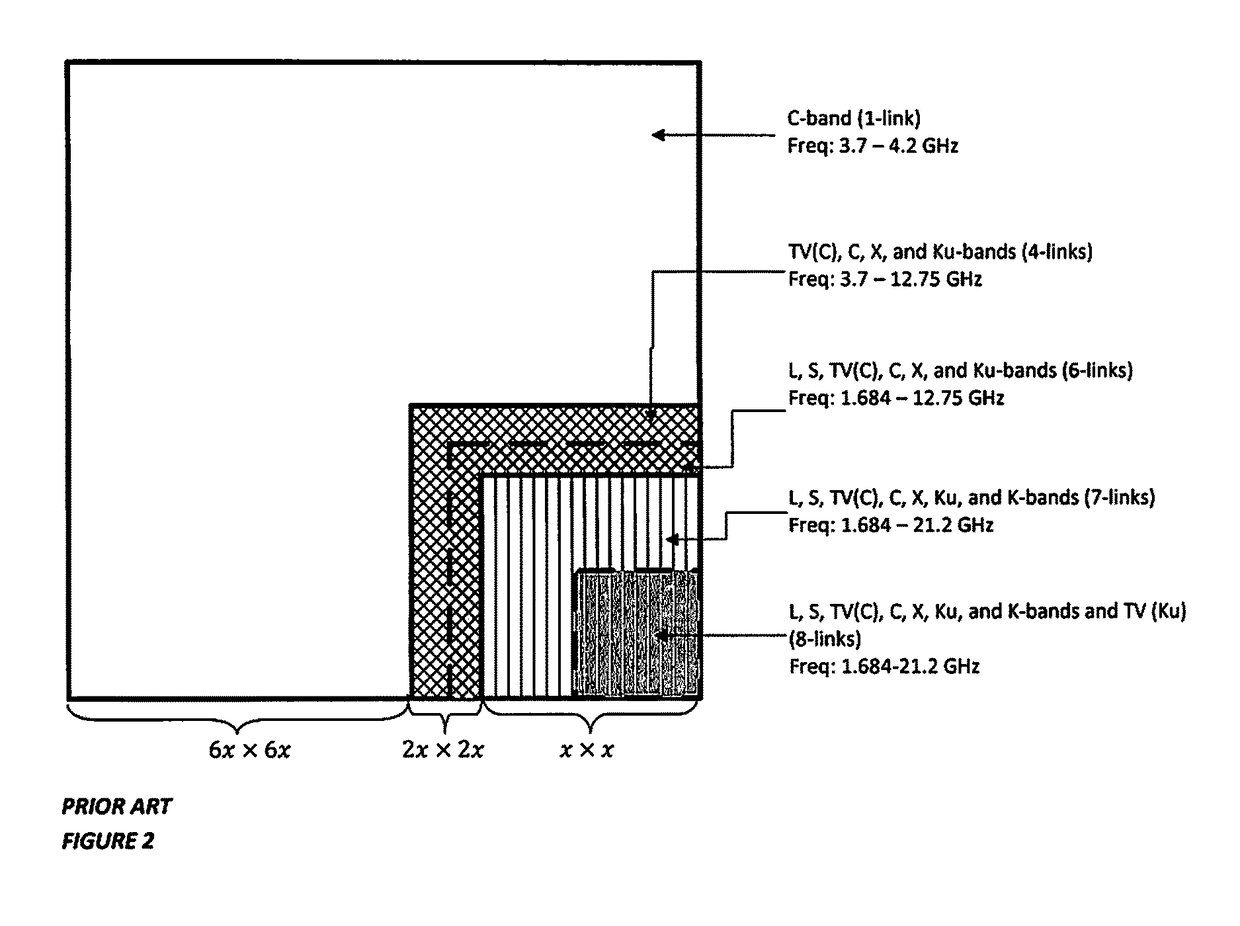Wideband multi-function phased array antenna aperture
a phased array, multi-functional technology, applied in the direction of simultaneous aerial operations, antennas, movable bodies, etc., can solve the problems of limiting the flexibility of the derived architecture, complex and costly multi-function arrays, and limited approaches, so as to reduce the number of radiating elements, reduce the required number of beams, and reduce the cost and complexity of multi-function arrays
- Summary
- Abstract
- Description
- Claims
- Application Information
AI Technical Summary
Benefits of technology
Problems solved by technology
Method used
Image
Examples
Embodiment Construction
[0038]Definitions: As used herein, C-Band frequencies are a set of radio frequencies ranging from 4 to 8 gigahertz (GHz); K-Band frequencies are a set of radio frequencies ranging from 18 to 27 GHz; Ku-Band frequencies are a set of radio frequencies ranging from 12 to 18 GHz; S-band frequencies are a set of radio frequencies ranging from 2 to 4 GHz; L-band frequencies are a set of radio frequencies ranging from 1 to 2 GHz; X-Band frequencies are a set of radio frequencies ranging from 8.0 to 12.0 GHz; TV(C)-band frequencies are a set of radio frequencies ranging from 4.0 to 4.2 GHz; and TV(Ku)-band frequency is 12.224 GHz.
[0039]Carrier Architectures
[0040]As discussed above and referring again to FIG. 2, a prior art architecture with the frequency scaled inter-element spacings, which reduces the number of elements, e.g. from 510,000 to only 116,110, but has the above-mentioned problems associated with that approach. As is discussed below, the invention overcomes these limitations, wh...
PUM
 Login to View More
Login to View More Abstract
Description
Claims
Application Information
 Login to View More
Login to View More - R&D
- Intellectual Property
- Life Sciences
- Materials
- Tech Scout
- Unparalleled Data Quality
- Higher Quality Content
- 60% Fewer Hallucinations
Browse by: Latest US Patents, China's latest patents, Technical Efficacy Thesaurus, Application Domain, Technology Topic, Popular Technical Reports.
© 2025 PatSnap. All rights reserved.Legal|Privacy policy|Modern Slavery Act Transparency Statement|Sitemap|About US| Contact US: help@patsnap.com



